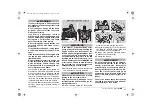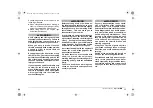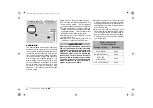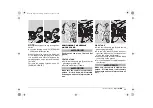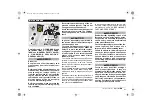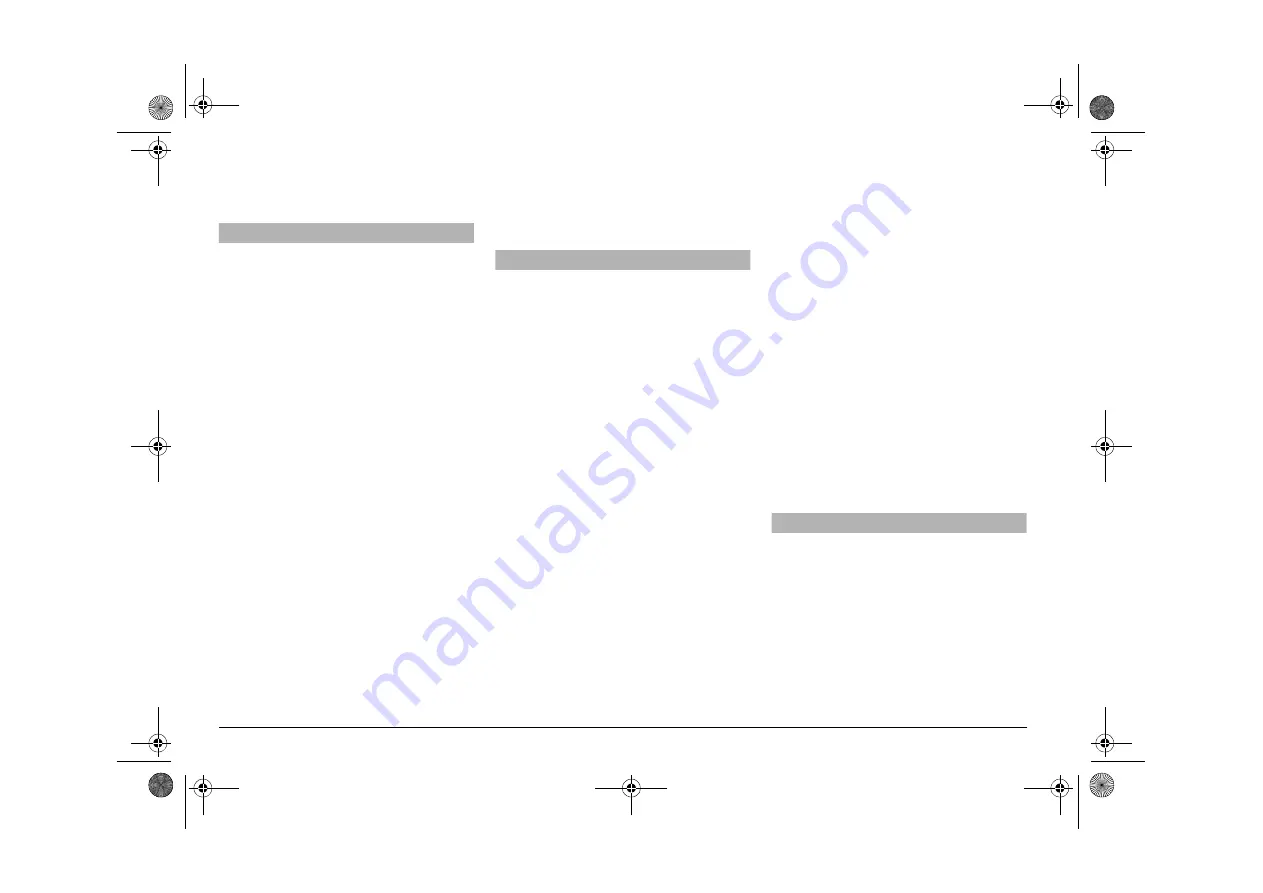
46
use and maintenance
Pegaso 650
-
4)2%3
This vehicle is equipped with inner tube
tires.
a
WARNING
Check the tire inflation at room temper-
ature at least once a week, see p. 100
(TECHNICAL DATA).
Pressure measurement must always be
carried out when the tires are cold, as
when the tires are warmed up, pressure
will increase, and if they are checked at
this time erroneous readings will be
seen.
If the tire is inflated to too high a pres-
sure, an uncomfortably harsh ride will
result, and riding comfort will be com-
promised. Also, road holding, especial-
ly during turns and in wet conditions,
will likewise be compromised.
If the tire is underinflated (pressure is
too low), the tire may slip on the rim
with consequent loss of control. Again,
road holding and handling characteris-
tics will be degraded, and brake perfor-
mance will be reduced.
When the tire is worn to a point where
any tread is less than 0.12 in (3 mm)
deep, the tire is worn out, and must be
replaced. Also, if a tire suffers a punc-
ture that is larger than 0.20 in (5 mm) in
its longest dimension, the tire must not
be repaired, but should be replaced.
After a tire is repaired, balance the
wheels. Use only tires that are listed,
see p. 100 (TECHNICAL DATA).
Insure that all tires are equipped with
properly installed valve caps.
a
WARNING
Do not ride the vehicle if the tire wear in-
dicators show that the tire is worn out.
Failure to heed this warning can lead to
an accident with subsequent serious in-
jury or even death.
Some types of tires homologated for
this vehicle are provided with wear indi-
cators.
There are several kinds of wear indica-
tors.
For more information on how to check
the wear, contact your Dealer.
Visually check if the tires are worn and
in this case have them changed.
If a tire should go flat while you are
riding the vehicle, do not attempt to
continue riding. Avoid abrupt braking
and steering inputs, and avoid shutting
the trottle quickly. Slowly decrease the
throttle setting, moving to the side of
the road, using the engine compression
to slow you to a stop. Non-compliance
with these instructions may cause acci-
dents with consequent risk of injuries
or even death.
If the tires are old, even if not complete-
ly worn out, they may become hard and
may not ensure good road holding.
In this case, have the tires changed.
Have the tire changed when it is worn
out or in case of puncture on the tread
side, if the puncture is larger than 0.20
in (5 mm).
After repairing a tire, have the wheels
balanced.
Use only tires in the size suggested by
APRILIA
, see p. 100 (TECHNICAL DATA).
Do not install tires with air tube on rims
for tubeless tires and viceversa.
Make sure that the tires always have
their valve sealing caps on, to prevent
them from suddenly going flat.
Repair, maintenance, changing and bal-
ancing of tires are very important to
your safety, and should only be per-
formed by qualified mechanics using
the appropriate tools.
For this reason, we suggest that you
have your tires serviced by your Local
APRILIA
Dealer.
a
WARNING
New tires are often covered with a slip-
pery mold release compound. Scrub the
tires in by riding slowly and making nu-
merous turns for the first few miles. Do
not use any kind of tire dressing or other
liquid on your tires. Especially do not
permit any petroleum products, such as
oil, gasoline or brake fluid to come in
contact with the tires. If you do, wipe it
immediately, then scrub the tire with
soap and water and a stiff brush. Do not
use a tire that is worn out.
Usa-01.fm Page 46 Wednesday, December 15, 1999 9:31 AM






















